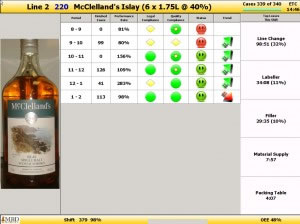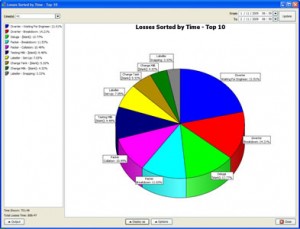How to Systemise Sustained Beneficial Change Without Causing Panic

By Roy Green, Managing Director of Harford Control
Knowing what systems you need to install is an important step, but knowing how to implement them with maximum buy-in from your team is essential in order to deliver and sustain the anticipated benefits.
It is a well established belief that manufacturing operations automate to reduce the head count and this belief doubtless has its origins as far back as the industrial revolution.
Though some automation does undoubtedly speed up production processes, and thereby increase efficiency whilst reducing unit production costs, other reasons for the implementation of automated systems will include the elimination, or at least minimisation, of human error, avoidance of lapses in concentration and errors of judgement. A well implemented system should ensure that the business runs to optimal efficiency and effectiveness 24/7, whatever the manufacturing complexity. It’s the effectiveness of this system that ensures nothing is left to chance, overlooked, or forgotten. It’s this same system that guarantees quality consistency, total compliance, conformance to plan and optimal efficiency in operations such that the only returns are happy customers wanting more.
 Such manufacturing optimisation, operational discipline, visualisation and cost effectiveness can never be achieved by the more typical information fragmentation and departmental informational silos where everyone has a bit of the picture (their bit) but nobody has the full picture and, even where they do, it’s paper based or in some other disconnected database where it’s impossible to see the priorities which, if visible and acted upon, could have the most dramatic impact upon performance improvement (more for less).
Such manufacturing optimisation, operational discipline, visualisation and cost effectiveness can never be achieved by the more typical information fragmentation and departmental informational silos where everyone has a bit of the picture (their bit) but nobody has the full picture and, even where they do, it’s paper based or in some other disconnected database where it’s impossible to see the priorities which, if visible and acted upon, could have the most dramatic impact upon performance improvement (more for less).
Neither will even the best, real time, integrated and paperless system on its own be sufficient to drive sustained performance improvement.
Experience has taught us that integrated systems ideology will only deliver/exceed the anticipated benefits if it is solidly backed by effective support, training and coaching. Some might refer to this as consultancy and with the content, depth and breadth of our support programme that’s probably true, but it’s all part of our standard methodology for turning systems into solutions.
What we do know is that for systems projects to succeed and deliver healthy ROIs, they have to be sophisticated enough to cover all manufacturing risks and variables, whilst remaining so simple and intuitive in use that anyone can get the best from them with a little training, coaching and support.
 Driving out the fear that so frequently sabotages systems implementation has to begin with the initial discussions and effective communication of the reasons for change and how continuous improvement protects rather than destroys jobs. Interdepartmental barriers need to be broken down so that senior management, middle management and factory floor operational personnel all see the same objective information and can take improvement actions with confidence.
Driving out the fear that so frequently sabotages systems implementation has to begin with the initial discussions and effective communication of the reasons for change and how continuous improvement protects rather than destroys jobs. Interdepartmental barriers need to be broken down so that senior management, middle management and factory floor operational personnel all see the same objective information and can take improvement actions with confidence.
When we first installed our systems within Dairy Crest it quickly became clear that the expected improvements could only realistically be achieved and sustained if everyone from the top down was involved. This is why, before we installed any systems we had, at each site, our break-out and vision meetings with each management team, such that everyone knew and understood the objectives and expectations. We jointly trained other teams to obtain better cross functional buy-in. The results during the past three years have been dramatic, with compliance issues eliminated, greater quality consistency, efficiencies improved by more than 10% and significant reductions in materials and labour wastage, whilst simultaneously eliminating factory floor paperwork. At one site alone the savings have been in excess of £2 million per annum.
The foregoing is really little more than a snapshot of Lean/Six Sigma in action. Through our knowledge transfer and support, certain tools such as SPC and Process Capability, were used to reduce variation and improve consistency (Six Sigma) whilst other tools, such as OEE and SIC were used to become more Lean or, put another way, the pursuit of an optimal combination of effectiveness and efficiency.


































